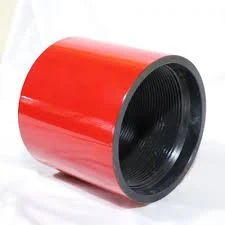- Afrikaans
- Albanian
- Amharic
- Arabic
- Armenian
- Azerbaijani
- Basque
- Belarusian
- Bengali
- Bosnian
- Bulgarian
- Catalan
- Cebuano
- Corsican
- Croatian
- Czech
- Danish
- Dutch
- English
- Esperanto
- Estonian
- Finnish
- French
- Frisian
- Galician
- Georgian
- German
- Greek
- Gujarati
- Haitian Creole
- hausa
- hawaiian
- Hebrew
- Hindi
- Miao
- Hungarian
- Icelandic
- igbo
- Indonesian
- irish
- Italian
- Japanese
- Javanese
- Kannada
- kazakh
- Khmer
- Rwandese
- Korean
- Kurdish
- Kyrgyz
- Lao
- Latin
- Latvian
- Lithuanian
- Luxembourgish
- Macedonian
- Malgashi
- Malay
- Malayalam
- Maltese
- Maori
- Marathi
- Mongolian
- Myanmar
- Nepali
- Norwegian
- Norwegian
- Occitan
- Pashto
- Persian
- Polish
- Portuguese
- Punjabi
- Romanian
- Russian
- Samoan
- Scottish Gaelic
- Serbian
- Sesotho
- Shona
- Sindhi
- Sinhala
- Slovak
- Slovenian
- Somali
- Spanish
- Sundanese
- Swahili
- Swedish
- Tagalog
- Tajik
- Tamil
- Tatar
- Telugu
- Thai
- Turkish
- Turkmen
- Ukrainian
- Urdu
- Uighur
- Uzbek
- Vietnamese
- Welsh
- Bantu
- Yiddish
- Yoruba
- Zulu
vacuum hose coupling
Understanding Vacuum Hose Coupling An Essential Component in Automotive Systems
Vacuum hose couplings are crucial components in the automotive and industrial sectors, serving as connectors for vacuum hoses in various systems. They help maintain vacuum integrity by ensuring a secure, leak-free connection, which is vital for the proper functioning of numerous automotive systems, including the braking system, emission control, and engine performance.
A vacuum hose coupling typically consists of a flexible tube made of rubber or silicone, designed to withstand the negative pressure of a vacuum system. The couplings come in various shapes and sizes to fit different hose diameters and applications. The primary function of these couplings is to connect two vacuum hoses or to attach a hose to a vacuum component, such as the intake manifold, brake booster, or electronic control unit.
When it comes to automotive applications, vacuum systems are essential for a variety of functions. For example, power brakes, which use vacuum to enhance braking force, rely heavily on a robust vacuum system. Any leaks in this system, often caused by faulty couplings or hoses, can lead to decreased braking performance and potentially danger while operating the vehicle. Similarly, vacuum hose couplings play a vital role in the emissions control system by helping maintain the necessary vacuum levels for components like the Positive Crankcase Ventilation (PCV) system. A well-functioning vacuum hose coupling ensures that no leaks occur, allowing the system to efficiently manage engine emissions.
vacuum hose coupling

Selecting the right vacuum hose coupling is essential for optimal performance. Factors to consider include the material composition (rubber vs. silicone), size, and type of application. For instance, silicone couplings are more resistant to heat and degradation over time, making them suitable for high-temperature environments found in engine compartments. On the other hand, rubber couplings are typically less expensive and can be used effectively in various low to moderate-temperature applications.
Installation plays a significant role in the performance of vacuum hose couplings. Properly aligning the hoses and ensuring they are securely fastened will minimize the risk of air leaks. Additionally, regular inspections and maintenance checks are critical. Technicians recommend routinely checking vacuum hoses and couplings for signs of wear, cracks, or bulging, which could indicate a failure that needs to be addressed promptly.
In summary, vacuum hose couplings are an indispensable part of both automotive and industrial systems. Ensuring these couplings are in good working condition is vital for maintaining system performance and safety. As automotive technologies continue to evolve, the importance of reliable vacuum systems, supported by quality vacuum hose couplings, remains unwavering. Understanding their functionality and maintaining their integrity is essential for any vehicle owner or technician aiming to uphold the efficiency and reliability of their systems.
-
Tubing Pup Joints: Essential Components for Oil and Gas OperationsNewsJul.10,2025
-
Pup Joints: Essential Components for Reliable Drilling OperationsNewsJul.10,2025
-
Pipe Couplings: Connecting Your World EfficientlyNewsJul.10,2025
-
Mastering Oilfield Operations with Quality Tubing and CasingNewsJul.10,2025
-
High-Quality Casing Couplings for Every NeedNewsJul.10,2025
-
Boost Your Drilling Efficiency with Premium Crossover Tools & Seating NipplesNewsJul.10,2025







